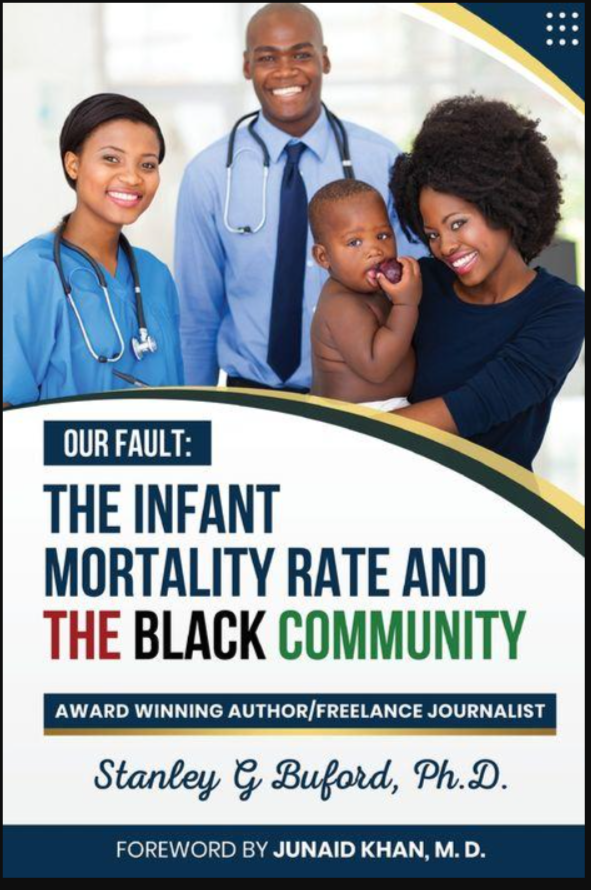(ThyBlackMan.com) Infant mortality, as defined by the Center for Disease Control and Prevention, “is the death of an infant before his or her first birthday.” It is measured by the infant mortality rate (IMR), the number of deaths of infants under the age of one in every 1000 live births, compared with mortality rates of children in other age groups within the same period. Numerous factors have been discovered that contribute to the infant mortality rate in the United States and there are even more factors that research is yet to uncover. However, one heartbreaking fact that data compilations have indeed revealed is that reproductive health inequality exists along racial lines.
Statistically—as shown from data from both developing and developed nations, the death rate among Black babies is higher compared to that among White babies. In 2018, the infant mortality rate for Black newborns in America was 10.8 deaths per 1000 live births, a figure that was more than double of the 4.6 deaths per 1000 live births among White babies. This gap has continued to grow even as the infant mortality rate for babies of all races has dropped since then.
Interestingly, an analysis of recorded births in the state of Florida over 24 years conducted by an associate professor and other researchers in the University Of Minnesota School of Public Health revealed that while Black newborns are 3 times more likely to die than White newborns, when the maternity doctor in record for a Black mother was also Black themselves, the death rate was reduced by half. According to the associate professor, Rachel Hardeman, this was the first empirical evidence to describe the impact of the physician’s race on a clinical outcome such as infant mortality, and this provided hard proof of structural racism in the healthcare sector.
At a time when worldwide efforts are being made to eliminate racial bias and any form of discrimination along racial lines, this discovery should not be the case. Black doctors should not be the notably more suitable care providers for Black patients during and after childbirth, and doctors of other races should not be evidently less efficient in caring for Black mothers in the same situations. In 2021, a doctor’s race should not be having direct correlations to infant mortality. This is a point that the forward-thinking human race of today should have surpassed decades ago.

Furthermore, it is not viable for Black families to always seek Black doctors during pregnancy or for postnatal care because there are not enough Black doctors to do this—another result of racial inequality. So what are more viable solutions to the racial disparities in deaths among newborns?
To be able to proffer solutions to the problem, we must first examine the causes. On a global scale, the major causes of infant mortality are premature birth, birth complications, neonatal sepsis (infection), pneumonia, malaria, malnutrition, and HIV. In the United States, the five main causes of infant mortality are low birth weight; birth defects; maternal peripartum complications; accidental and non-accidental injuries; and sudden infant death syndrome (SIDS).
Besides medical-related causes, there are also socioeconomic and lifestyle factors such as education level, income level, early motherhood, alcohol or drug use during and after pregnancy, etcetera, that impact infant mortality. The majority of these factors are more prevalent in Black families, especially racially related factors such as socioeconomic disadvantage. A pregnant woman’s environment, no doubt, affects the outcome of her pregnancy and her child’s health. Unfortunately, in the case of a Black woman, she does not have to be underprivileged for her life or her baby’s life to be at stake.
For a long time, Black maternal health has remained a huge cause for concern. Black women are 4 to 5 times more likely to die during pregnancy and childbirth than White women, irrespective of their income, education, or lifestyle. This is even more disquieting because most pregnancy-related deaths are preventable. The socioeconomic origins of this issue aside, there are the differences in access to healthcare faced by women of color.
Lack of access to quality healthcare and prenatal care plays a massive role in infant mortality in the Black community. Racial and ethnic minorities oftentimes experience a lower quality of health services and are even less likely to receive routine medical procedures. Black mothers are aware of this prejudice and thus, harbor a growing distrust in the American healthcare system. This is why you oftentimes find Black mothers choosing to opt out of essential prenatal care altogether, putting their lives and the lives of their babies at risk.
This apparent hollow in communication between Black mothers and their maternity doctors—especially when these doctors are of a different race from them—exacts principal influence on the racial differences in infant mortality. So what more can Black moms do to stem the tide of miscommunication with their doctors? And of course, this is a two-way street, so what can doctors do as well to liaison better with Black mothers?
The first step to take is to raise awareness among doctors, nurses, and hospital administrators about the widespread existence of medical bias against the Black community and the need to be conscious of it so it can be eliminated from the healthcare system. This will also spark the reevaluation of organizational routines in hospitals, especially routines that work against the interests of people and mothers of color.
We can take a step further by mandating this awareness. Medical schools and training programs should mandatorily address racism in their coursework so that the medical practitioners that are produced from these institutions are equipped and competent enough to handle these issues.
From these efforts, the faith of Black moms in the healthcare system will be rekindled over time. Subsequently, awareness can also be created among Black mothers on the importance of prenatal care to them and their babies. Black mothers can then become more proactive in ensuring that they receive all the necessary prenatal care that will guarantee them successful childbirths.
Black moms can also seek out medical support that they can trust, for instance, a doula. Doulas are not healthcare professionals but they do support their clients through significant health-related experiences including childbirth, miscarriage, and even patients on their deathbeds. They can also provide support to the client’s partner, family, and friends. The work doulas do complement the role of a doctor and can help Black mothers feel safe and comfortable during pregnancy, labor, and the postpartum period. This will prove effective in lowering the risk of child mortality.
Today’s policymakers must be engaged and provided with transparent data gathered from research to enable them to create public health policies that will benefit all expecting and new mothers, especially Black moms. More funding should be channeled towards research that supports this mission, as well as to programs that improve prenatal care.
Efforts to increase educational opportunities and provide occupational training and economic empowerment in the Black community will create safer home environments for Black mothers and decrease their exposure to factors that can generate complications or tragedies during or after childbirth.
Employing these solutions, American families, medical practitioners, the government, and the entire country will be able to work towards narrowing the gap in IMR racial differences and create more positive and equitable birth outcomes in the United States.
As a doctoral student, I have compiled my research into a new book titled… Our Fault: The Infant Mortality Rate and the Black Community. Please read if you want to learn more about this topic that is vital to all stakeholders!
Purchase Book; Our Fault: The Infant Mortality Rate and the Black Community (——
Staff Writer; Stanley G. Buford
Feel free to connect with this brother via Twitter; Stanley G. and also facebook; http://www.facebook.com/sgbuford.
















Leave a Reply